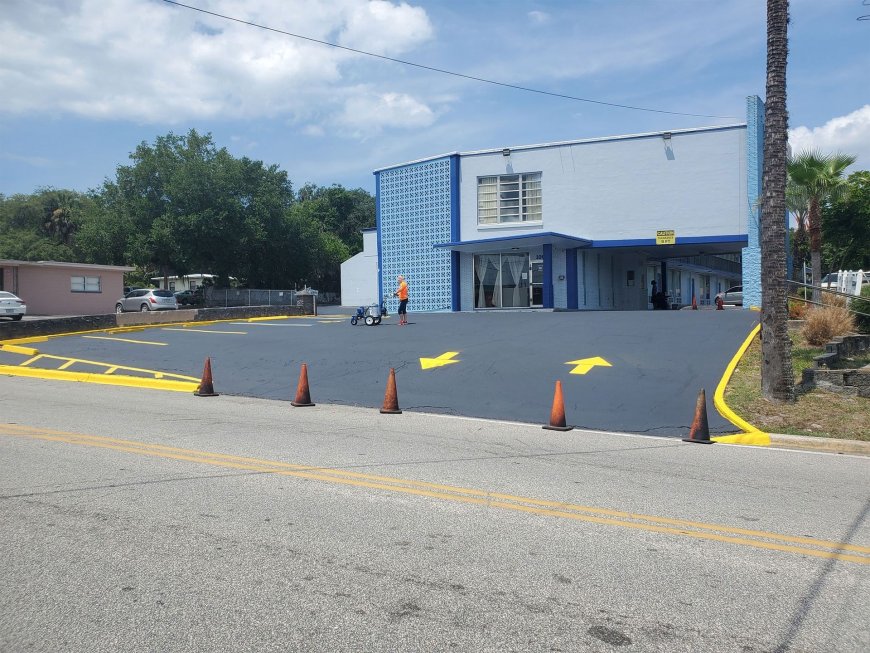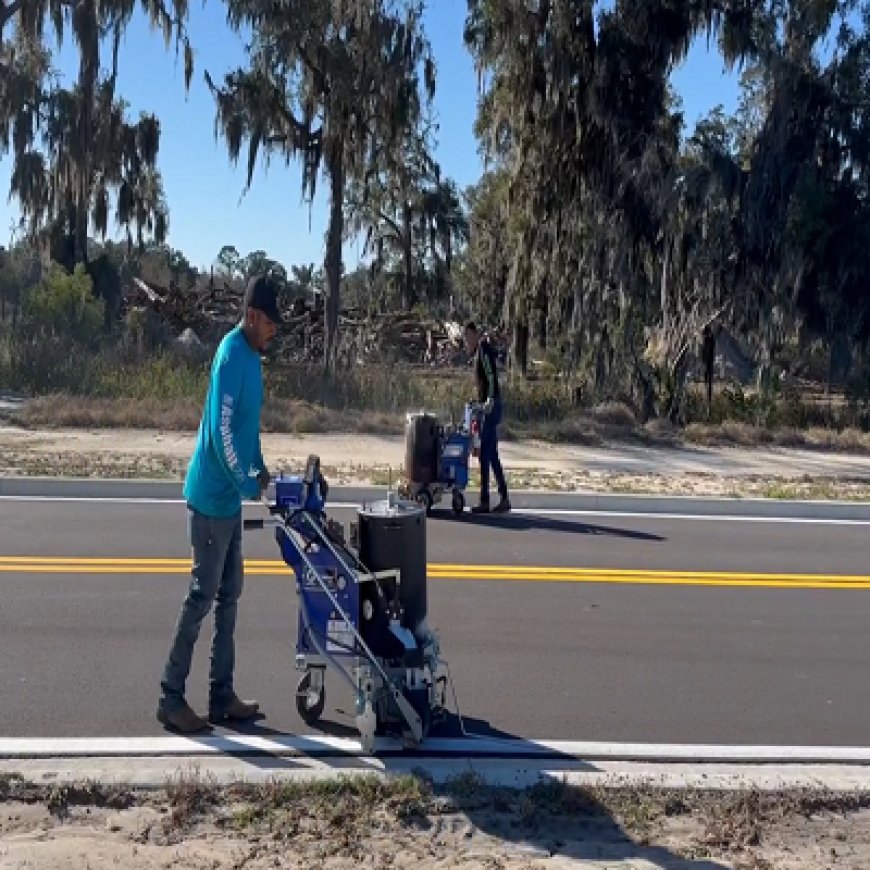Upgrading Road Infrastructure With Pavement Asset Management System
A Pavement Asset Management System (PAMS) is a comprehensive and systematic approach to managing and maintaining road networks and other paved surfaces.
In today's rapidly evolving urban landscape, efficient road infrastructure is essential for the smooth functioning of transportation networks. Two critical components that play a significant role in maintaining and enhancing road quality are Pavement Asset Management Systems (PAMS) and Thermoplastic Road Marking Paint. Let’s understand these technologies, their benefits, and their impact on modern road infrastructure.
Understanding Pavement Asset Management System
It is a comprehensive tool designed to assist road maintenance and management authorities in making informed decisions. The pavement asset management system integrates data collection, analysis, and decision-making processes to optimize pavement performance and extend its lifespan.

Key Components of PAMS
Data Collection: PAMS utilizes advanced technologies such as laser scanners, ground-penetrating radar, and digital imaging to collect detailed data on pavement conditions, including surface distress, roughness, skid resistance, and structural integrity.
Data Analysis: The collected data is analyzed using sophisticated algorithms and models to assess the current state of the pavement, predict future deterioration, and identify maintenance needs.
Decision Support: PAMS provides decision-makers with actionable insights and recommendations for maintenance strategies, budget allocation, and prioritization of repair activities.
Benefits of PAMS
Improved Decision-Making: PAMS enables road authorities to make data-driven decisions, ensuring that maintenance efforts are focused on areas that require immediate attention, thereby optimizing resource utilization.
Cost Efficiency: By predicting pavement deterioration and planning timely interventions, PAMS helps reduce maintenance costs and extend the life of road assets.
Enhanced Safety: Regular monitoring and maintenance of pavements enhance road safety by minimizing the risk of accidents caused by poor road conditions.
Sustainable Infrastructure: PAMS promotes sustainable road management practices by reducing the frequency of major repairs and minimizing the environmental impact of road maintenance activities.
The Role of Thermoplastic Road Marking Paint
What is Thermoplastic Road Marking Paint?
It is a type of road marking material that is applied in a molten state and hardens upon cooling. Thermoplastic road marking paint is widely used for creating durable and highly visible road markings such as lane lines, pedestrian crossings, and directional arrows.
Composition and Application
Thermoplastic road marking paint typically consists of binder resins, pigments, glass beads, and fillers. The application process involves heating the material to a high temperature, applying it to the road surface using specialized equipment, and allowing it to cool and harden.
Advantages of Thermoplastic Road Marking Paint
Durability: Thermoplastic road markings are highly resistant to wear and tear, making them ideal for high-traffic areas.
Visibility: The inclusion of glass beads in the paint enhances reflectivity, ensuring that road markings are visible both during the day and at night, thereby improving road safety.
Cost-Effective: Due to their long lifespan and minimal maintenance requirements, thermoplastic road markings offer a cost-effective solution for road authorities.
Environmental Considerations
Thermoplastic road marking paint is also considered environmentally friendly compared to other road marking materials. It does not contain volatile organic compounds, which can contribute to air pollution. Additionally, its durability means that less frequent reapplication is required, reducing the environmental impact associated with road marking activities.
Integrating PAMS and Thermoplastic Road Marking Paint for Optimal Road Management
Data-Driven Road Marking
Integrating PAMS with the application of thermoplastic road marking paint can lead to more efficient and effective road management. PAMS can identify areas where road markings are most needed based on traffic patterns and pavement conditions. This ensures that resources are allocated where they can have the greatest impact on road safety and efficiency.
Enhanced Maintenance Planning
PAMS can also provide valuable insights into the timing of road marking applications. By predicting pavement deterioration, PAMS can help schedule road marking activities to coincide with other maintenance operations, reducing disruptions and maximizing the effectiveness of road maintenance efforts.
Real-Time Monitoring and Adjustment
The integration of the Pavement Asset Management System with advanced road marking technologies allows for real-time monitoring and adjustment of road markings. For instance, sensors embedded in the pavement can detect fading or damage to road markings, triggering immediate maintenance actions to restore visibility and safety.
Challenges and Future Directions
Challenges in Implementation
Despite the numerous benefits, implementing PAMS and thermoplastic road marking paint is not without challenges. Initial setup costs, technical expertise requirements, and the need for continuous data collection and analysis can pose barriers to adoption, particularly for smaller municipalities with limited budgets.

Technological Advancements
However, ongoing advancements in technology are addressing many of these challenges. The development of more affordable and user-friendly data collection tools, as well as improvements in machine learning algorithms for data analysis, are making PAMS more accessible to a wider range of road authorities.
Future Directions
Looking ahead, the future of road infrastructure management lies in further integration and automation. The combination of the Pavement Asset Management System with Internet of Things devices, artificial intelligence (AI), and machine learning will enable even more precise and proactive road maintenance strategies. Additionally, innovations in thermoplastic road marking materials, such as the incorporation of smart sensors and adaptive features, will continue to enhance road safety and efficiency.
Conclusion
Pavement Asset Management Systems and thermoplastic road marking paint represent two critical components of modern road infrastructure management. By leveraging data-driven decision-making and durable, highly visible road markings, road authorities can optimize maintenance efforts, enhance road safety, and promote sustainable infrastructure practices. As technology continues to advance, the integration of these systems will become increasingly sophisticated, paving the way for smarter, safer, and more efficient road networks. Investing in PAMS and thermoplastic road marking paint is not just about maintaining roads; it's about building a foundation for the future. By adopting these technologies, we can create roadways that are resilient, safe, and capable of meeting the demands of an ever-evolving urban landscape. Whether you're a city planner, a transportation authority, or a concerned citizen, understanding and supporting the implementation of these innovations is crucial for the advancement of our road infrastructure.
What's Your Reaction?



















